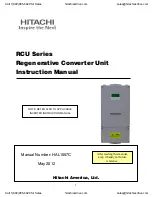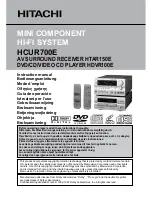
Vi
deo
ni
cs PowerSc
ri
pt Iden
ti
f
yi
ng PowerSc
ri
pt Jacks and Panels
5
Identifying PowerScript Jacks and Panels
Examine the PowerScript front and rear panels and compare them to the illustrations
that follow to orient yourself to the controls and jacks.
Front Panel
Power Light
—Lights when the unit is powered on.
Keyboard Jack
—Accepts the Keytronics™ keyboard, which is included in your Power-
Script package. You can use most AT-type keyboards with PowerScript.
Serial Mouse Jack
—Accepts a standard computer serial-type mouse, which is included in
your PowerScript package.
PC Card Slot
—Accepts a Type I, II, or III PC Card. An identical PC Card slot is included
on the rear panel.
PC cards (sometimes called PCMCIA Cards) store fonts, graphics, projects, and other
items. You can insert two PC cards into PowerScript at the same time—but the com-
bined power supply current for the two cards cannot exceed 1.5 Amps. PC cards can
be obtained from many computer hardware outlets. You might want to purchase sev-
eral PC cards to store different projects and backup copies of your work.
Ethernet connections can be made using a PC Card Ethernet adapter. See Chapter 8,
PowerScript Computer Connections
, for further information.
Rear Panel
Power Connector, Switch, and Fuse
—The power cord (included in your package) con-
nects to the three-prong plug. Use the toggle switch to turn PowerScript on and off. The
fuses are located behind the fuse door.
PC Card Slot
—Identical to the PC Card slot on the front panel.
RS-232 Jack
—Use to connect a modem or computer to PowerScript. A cable (not
included) is required to make the connection. RS-232 connection is provided via a
female, 9-pin (DB-9) jack. See “Serial Cable Connection” on page 149 for additional
information.
Component IN / Component OUT
— (These connectors are available only on the Pow-
erScript Model PS4000SC.) Includes inputs and outputs in analog component format—
YUV for PAL/625 models and Y, R-Y, B-Y for NTSC/525 models. NTSC/525 models can be
set to use Betacam or MII standard levels. See “Studio Model Settings” on page 124 for
more information.
GPI Jacks (2)
—Connect a GPI (
G
eneral
P
urpose
I
nterface) unit to either or both of these
jacks.
Use of GPI is optional. A contact closure on these inputs triggers a project. If you are
using an external device to trigger PowerScript, connect its GPI trigger output to one
of the GPI inputs. GP1 and GP2 perform identically. See “Using GPI” on page 115 for
more information.
Sync Loop
—The IN and OUT jacks are wired together so that you can form a daisy chain.
The termination switch terminates the line with 75-ohms, for use when PowerScript is at
the end of sync loop.
Use of sync loop is optional. A reference, or sync, input is provided for connection to
your studio’s time base reference (house black). A sync output is also included and
the termination can be switched. See page 123 for further instructions.
SC Phase Adjustment
—The Coarse SC adjustment varies SC delay over approximately a
360 degree range in steps of 32 degrees for NTSC/525 systems and 26 degrees for PAL/625
systems. The Fine adjustment is continuously variable over a +/- 30 degree range.
Содержание PowerScript PS4000S
Страница 22: ...Notes ...
Страница 38: ...Notes ...
Страница 72: ...Notes ...
Страница 96: ...Notes ...
Страница 122: ...Notes ...
Страница 156: ...Notes ...
Страница 174: ...Notes ...
Страница 226: ...Notes ...
Страница 236: ...Notes ...
















































